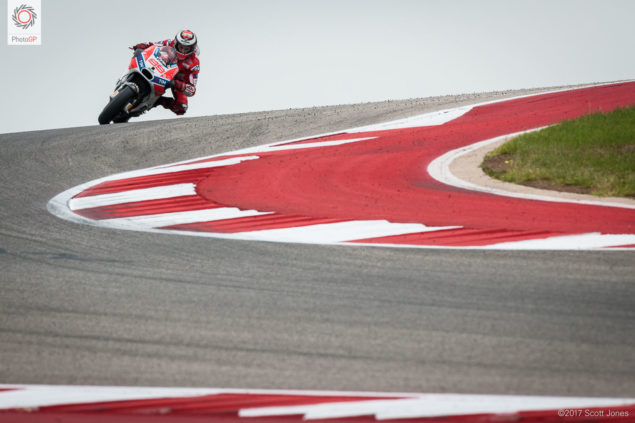Hello again from Austin, Texas and the Circuit of the Americas. Fresh off yesterday’s sessions on the 2017 Suzuki GSX-R1000, we have another day of track riding ahead of us (it’s a tough life, I know).
Switching things up a bit, we will be on the Aprilia RSV4 RR, Aprilia RSV4 RF, Aprilia Tuono V4 1100 RR, and Aprilia Tuono V4 1100 Factory. That’s a lot of bikes to ride in a single-day format, but we should be able to get some good seat time on each of the new Aprilia models for you.
Our focus for the day will be on the bevy of changes that Aprilia has brought to its V4 platform for the 2017 model year, as the Italian brand looks to continue the evolution of both its RSV4 and Tuono V4 lineups.
The big changes at hand are more power, an updated electronics package, new suspension pieces for the RSV4 RF and Tuono V4 1100 Factory, and upgraded brakes (cornering ABS from Bosch and larger brake discs) on all the models.

















